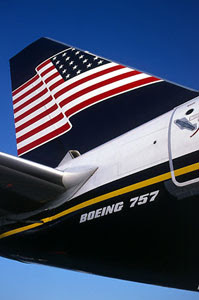by B. N. Sullivan

A second interim report about Air France Flight 447 has been released by the French Bureau d’Enquêtes et d’Analyses (BEA). Flight 447 was the Airbus A330-200 that was
lost over the Atlantic on June 1 of this year while en route from Rio de Janeiro to Paris. The BEA had released its
first interim report in July.
This most recent report describes the ongoing work of the investigators, focusing on:
- the pieces of recovered wreckage
- meteorological conditions at the time of the accident
- maintenance messages transmitted by ACARS
- the certification and the continuing airworthiness of the Pitot probes
- speed inconsistencies during cruise
By its very nature as an 'interim' report, the document presents no conclusions about the cause of the accident, saying "At this stage, in the absence of any data from the flight recorders, the main parts of the airplane and any witness testimony on the flight, the precise circumstances of the accident, and therefore its causes, have still not been determined. The investigative work is continuing with this objective."
The new report (links below) includes many photographs of pieces of debris recovered from the ocean, with explanations, as well as a number of explanatory diagrams.
Regarding physical evidence from the aircraft passenger cabin, the report says, "The cabin crew’s seatbelts that were found (three out of eleven) were not in use at the moment of impact."
The report notes that recovered life jackets were still in their packages, and that examination of several of the recovered passenger oxygen containers "showed that they were in the closed position," i.e., had not deployed. "There had been no cabin depressurisation," says the report.
Regarding pieces of wing and control surface that had been recovered, the report notes deformations that "were the result of the bottom-upwards loads." Evidence such as this has led investigators to the belief that the aircraft hit the water largely intact and on its belly.
Several parts of the aircraft's flap extension mechanism fairing were found. Analysis and comparison with an identical aircraft "made it possible to determine that the flaps were in the 'retracted' position at the time of impact with the water."
The vertical stabilizer was recovered largely intact and "in generally good condition." According to the report, "The damage due to separation from the fuselage was essentially located at the root of the vertical stabiliser."
The vertical stabiliser’s side panels did not show signs of compression damage. The breaks seen at the level of the lateral load pick-up rods were the result of the backwards movement of the attachments and centre and aft frames. The
observations made on the vertical stabiliser are not consistent with a failure due to lateral loads in flight.
In regard to fuselage parts (remains of the skin, frames and web frames), the report says, "The fuselage was sheared along the frames and centre and aft attachment lugs by loads applied bottom-upwards."
The observations made on the debris (toilet doors, partitions, galleys, cabin crew rest module, spoiler, aileron, vertical stabiliser) evidenced high rates of compression resulting from a high rate of descent at the time of impact with the water.
This high rate of compression can be seen all over the aircraft and symmetrically on the right- and left-hand sides.
High levels of loading would be required to cause the damage observed forward of the vertical stabiliser (compression failure of the forward attachment).
These observations are not compatible with a separation of the aft part of the fuselage in flight.
The patterns of deformation also led the investigators to conclude that "the aircraft had low bank and little sideslip on impact," and that the deformations "were not consistent with an aircraft nose-down attitude at the moment of impact.'
Commentary on the autopsies performed on human remains recovered also is included in this report.
The autopsies performed made it possible to identify fifty persons: forty-five passengers, four flight attendants, including an in-charge flight attendant, and the Captain.
Many of the observed injuries, including fractures to the pelvis, spine and thorax, were said to be "compatible with the effect, on a seated person, of high acceleration whose component in the axis of the spinal column is oriented upwards through the pelvis."
The report notes that "information from the autopsies does not make it possible to reach a conclusion as to the location of the Captain at the time of the accident."
To read the report for yourself, follow either of these links to the BEA's second interim report on the Air France Flight 447 accident investigation:
Note: If the BEA web site is busy or the documents fail to load, here is an alternative source for the
English version of the second BEA Interim report.
RELATED: Click here to view all posts about Air France Flt 447 on
Aircrew Buzz.
 A Boeing 737-800 aircraft (registration N977AN) operated by American Airlines has crashed in Jamaica. According to a statement from the airline, Flight AA 331 overran the runway on landing at Kingston, Jamaica's Norman Manley International Airport late on the evening of Tuesday, December 22, 2009. The flight had originated at Reagan/National Airport in Washington, DC, operating first to Miami International Airport, and then continuing on to Jamaica from Miami. On board were six crew members and 148 passengers.
A Boeing 737-800 aircraft (registration N977AN) operated by American Airlines has crashed in Jamaica. According to a statement from the airline, Flight AA 331 overran the runway on landing at Kingston, Jamaica's Norman Manley International Airport late on the evening of Tuesday, December 22, 2009. The flight had originated at Reagan/National Airport in Washington, DC, operating first to Miami International Airport, and then continuing on to Jamaica from Miami. On board were six crew members and 148 passengers.

BNSullivan).jpg)
BNSullivan.jpg)






